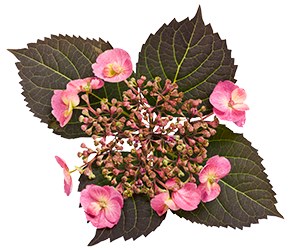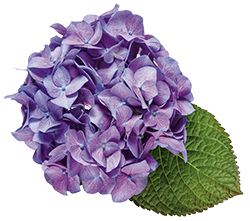Types of Holly
Compare 6 different types of commonly grown holly bushesWith more than 400 species, hollies are one of the most diverse groups of plants. Learn more about each type to find the right fit for your garden.
WINTERBERRY
Zones: 3-9
Botanical name: Ilex verticillata
Shrub type: Deciduous
Native:Eastern US and southeast Canada
Growing conditions: Grows well in wetlands, grasslands and dry sand dunes and is tolerant of a wide range of growing conditions. In wet sites, plants will spread to form a dense thicket, while in dry soil, plants remain smaller.
Habit: Plants develop an upright open habit, maturing at 5 to 15 feet tall and wide.
Foliage and berries: Glossy green foliage, 1-1/2 to 3-1/2 inches long, oval, with slightly serrated edges. The bright red berries are a food source for songbirds—particularly robins—during winter. The absence of winter foliage allows the prolific berries to appear more pronounced in the landscape.
Uses: Branches can be cut and used in floral arrangements, wreaths and garlands. Use as hedging, screening, or naturalize in a woodland setting.
INKBERRY
Zones:5-9
Botanical name: Ilex glabra
Shrub type: Evergreen
Native: Inkberry is indigenous to sandy woodlands, swamps, and bogs in coastal areas of eastern North America.
Growing conditions: This evergreen shrub is highly adaptable, tolerating a wide range of soil and light conditions.
Habit: Standard plants have an upright bushy habit, reaching 5 to 10 feet high and wide at maturity, dwarf varieties reach 2 to 3 feet tall and wide.
Foliage and berries: Glossy green leaves up to 1-1/2 inches long have smooth or slightly serrated margins. The name inkberry comes from the black pea-sized berries, which sometimes occur in red and white.
Uses: Tolerant of salt, urban pollution, and wet conditions, inkberry can be planted in bogs and rain gardens, as well as near streams, ponds and beachside locations. Use as hedging or screening, or naturalize in a woodland setting. Cultivars such as ‘Densa’ are typically better garden plants than the straight species, with a more compact habit and less suckering.
JAPANESE HOLLY
Zones: 5-8
Botanical name: Ilex crenata
Shrub type: Evergreen
Native: Asia
Growing conditions: This evergreen shrub or small tree can adapt to a wide range of soil conditions and is tolerant of drought, shade and urban pollution.
Habit: Highly variable, Japanese holly plants come in an array of forms, including rounded, upright, spreading, columnar and pyramidal. Size ranges from 1 to 15 feet tall and 1 to 12 feet wide.
Foliage and berries: The glossy leaves are small, up to 1-1/4 inches long, with a smooth, wavy or spiny margin, occurring in colors of green, blue-green, or yellow. Pea-sized fruit is black or red.
Uses: Japanese holly is a popular subject for bonsai enthusiasts, and can be used as a substitute for boxwood. Grow in a container, as hedging, screening, pathway edging, or foundation plantings.
YAUPON
Zones: 7-10
Botanical name: Ilex vomitoria
History: Native Americans brewed the leaves and stems for a drink that was used in rituals that included vomiting—hence the species name—though the plant itself does not cause stomach upset.
Shrub type: Evergreen
Native: This broadleaf evergreen shrub or small tree, native to the southeastern U.S. and Mexico.
Growing conditions: Grows naturally in coastal areas with well-draining sandy soils. Yaupon holly prefers warm, humid conditions similar to its native habitat, and is more drought-tolerant and disease-resistant than many other species.
Habit: Size ranges from 4 to 20 feet tall and 6 to 15 feet wide, with structure that is upright, dwarf, columnar, or weeping.
Foliage and berries: Glossy green leaves are ½ to 1-1/2 inches long and oval with slightly toothed margins. Fruit is shiny red or yellow.
Uses: Can be trained into small vase-shaped trees with multiple trunks that showcase the attractive gray bark. Dwarf types, which look similar to boxwood, are useful for hedging. Yaupon holly can also be grown as privacy screening or in foundation plantings.
ENGLISH HOLLY
Warning: This plant is invasive in many places. See where here.
Zones: 7-9
Botanical name: Ilex aquifolium
Shrub type: Evergreen
Native: European native
Growing conditions: English hollies don't tolerate heat well, and are best planted in partial shade in warmer areas. They do require well-draining soil and will deteriorate rapidly if planted in wet areas. They also prefer to be protected from cold winter winds.
Habit: These evergreen trees or shrubs range from 15 to 80 feet tall and 8 to 25 feet wide, and are upright or pyramidal in structure.
Foliage and berries: Thick leathery leaves are glossy, 2 to 4 inches long, oval, with spiny or spineless margins, and come in colors of green, blue-green, or variegated. Berries are large and rounded, in colors of bright red, orange, or yellow.
Uses: Popularized in Christmas carols and lore, the branches and berries of English holly have long been used to adorn holiday wreaths and garlands. Grow as a foundation planting, landscape accent, or train into a small tree.
BLUE HOLLY
Zones: 5-9
Botanical name: Ilex x meserveae
Shrub type: This dense evergreen shrub—a hybrid cross between English holly and tsuru holly (Ilex rugosa)—was developed as a standard form to be sold in nurseries and garden centers.
Growing conditions: Plant in areas with moist, well-drained and slightly acidic soil. The plants do best in a partial to full sun site.
Habit: The structure can be upright, bushy, or pyramidal. Vigorous plants are fast growing, reaching 5 to 15 feet high and 3 to 10 feet wide at maturity.
Foliage and berries: The glossy leaves are ¾ to 3 inches long, spiny and dark blue-green in color. Showy large berries are bright red.
Uses: Use pyramidal forms as a stand-alone accent or as hedging. Bushy types can be allowed to grow naturally or kept sheared as formal hedging.
See more on hollies:
How to Grow Holly Bushes
Pruning Holly Bushes
Last updated: November 6, 2020











